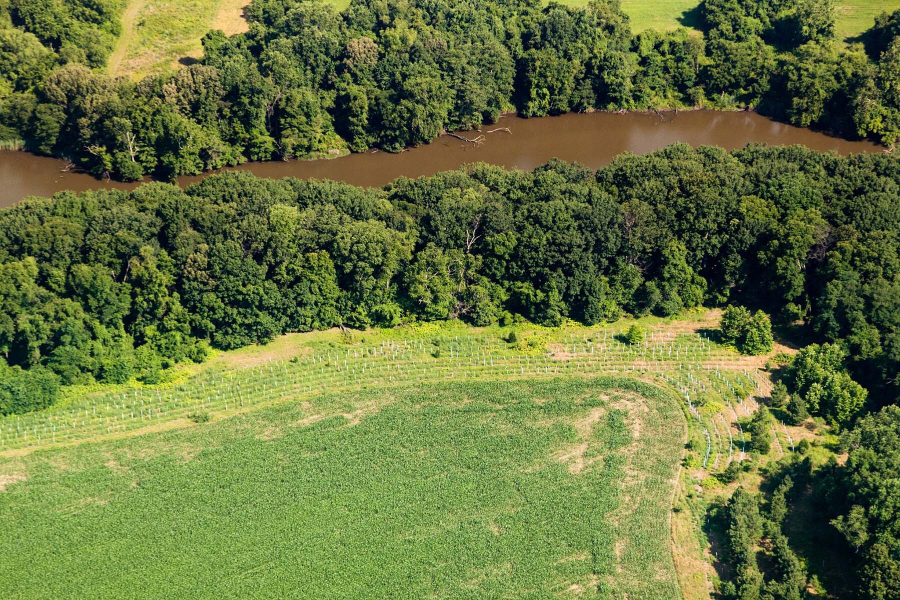Forest buffer plantings make progress, fall short of annual target
Watershed states restored 64 miles of buffers along rivers, streams in 2015

Trees and shrubs planted along the shores of the rivers, streams and creeks that flow into the Chesapeake Bay play a key role in improving water quality in the region. But according to Chesapeake Bay Program experts, the rate of plantings has continued to decline. Between July 2014 and June 2015, about 64 miles of forest buffers were planted along creeks and streams in the Bay watershed. While this marks movement toward the outcome, it remains below the 900-mile-per-year goal.
Streamside trees and shrubs—called riparian forest buffers—provide a multitude of environmental benefits. They reduce erosion from stream banks, prevent nutrients and other pollution from entering waterways, provide food and habitat to wildlife and keep stream temperatures cool and consistent, benefiting brook trout and other sensitive species that thrive in cooler temperatures. Because of their ability to efficiently trap and filter pollutants carried by stormwater runoff, forest buffers are considered one of the most cost-effective best management practices.
More than 8,000 miles of forest buffers have been restored across the watershed since 1996, but recent years have seen a sharp decline in the planting rate. In 2010, watershed states planted 359 miles of forest buffers—nearly 40 percent of the 900 mile-per-year goal. But in 2015, the entire watershed planted just seven percent of the annual target.
Many complicated factors have affected the restoration of forest buffers, including a lack of coordination among agencies, underutilized funding programs and insufficient information and assistance for farmers and landowners. To meet these challenges, partners across the region, facilitated by forestry experts at the Bay Program, are working to better coordinate on the delivery of buffer programs by federal, state and local agencies; align opportunities to restore forest buffer programs with compatible land management programs; and enhance existing forest buffer programs to make them more appealing to landowners.
In 2007, Chesapeake Bay watershed states committed to restoring 900 miles of forest buffers per year—a rate that was incorporated into the 2010 Chesapeake Bay Executive Order, which calls for a total of 14,400 miles to be restored by 2025. As part of the 2014 Chesapeake Bay Watershed Agreement, the states reaffirmed the 900-mile-per-year goal and committed to restoring and conserving existing buffers until at least 70 percent of streamside areas in the watershed are forested.
Learn more about the Bay Program’s work to restore forest buffers.

Comments
There are no comments.
Thank you!
Your comment has been received. Before it can be published, the comment will be reviewed by our team to ensure it adheres with our rules of engagement.
Back to recent stories